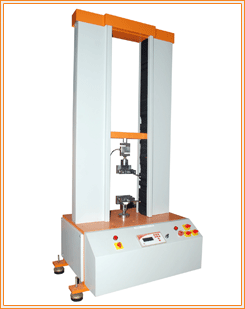The tensile test is a renowned
method that adjudicates the mechanical features of the material. Usually, the
test is undertaken by the Manufacturer of Plastic Testing Equipment. The
test collects the information about the strength and specifications of the
materials. The key controls which describe stress attained during this test,
includes elastic modulus, percent elongation, yield strength and tensile
strength. Also, tensile test performed by UTM or
the Universal Tensile Machine and the test is performed to judge sturdiness and
elasticity of the product.
Procedure of the Test
Prior to commencing the
procedure of test, it is important to find gauge marks on sample and to also
measure the introductory diameter and length of the sample. Hence, you need to
choose a load cell that could misrepresent the specimen. You need to bear the
strength of tensile of the product in your mind.
Initiation of test through Universal
tensile tester needs a sample of material which is tested as per
the standards. The sample may either be square and rectangular in the shape. To
perform the test for the metals in easy simple way, sample of the proper
thickness should be taken. Usually, a rectangular sample is suitable for the metals.
The specimen who is used matches over length where prolongation measurements
are done. The Tensile testing machine arranges the sample in clamps
of tensile testing machine to get a strong grip. Subsequent to this,
measurement indicator displays entire pressure which is applied on grips with
load cell.
This indicator is well fitted
with the memory of peak force retention that can be persuaded to demonstrate
load which is exercised on sample prior to the fractures. The tensile machines
are also fitted with the overload protection that relay automatically and it
also stops the motor when load crosses the highest range. You need to remember
to record maximum load when performing this test. Keep doing this test till the
time the sample breaks.

No comments:
Post a Comment